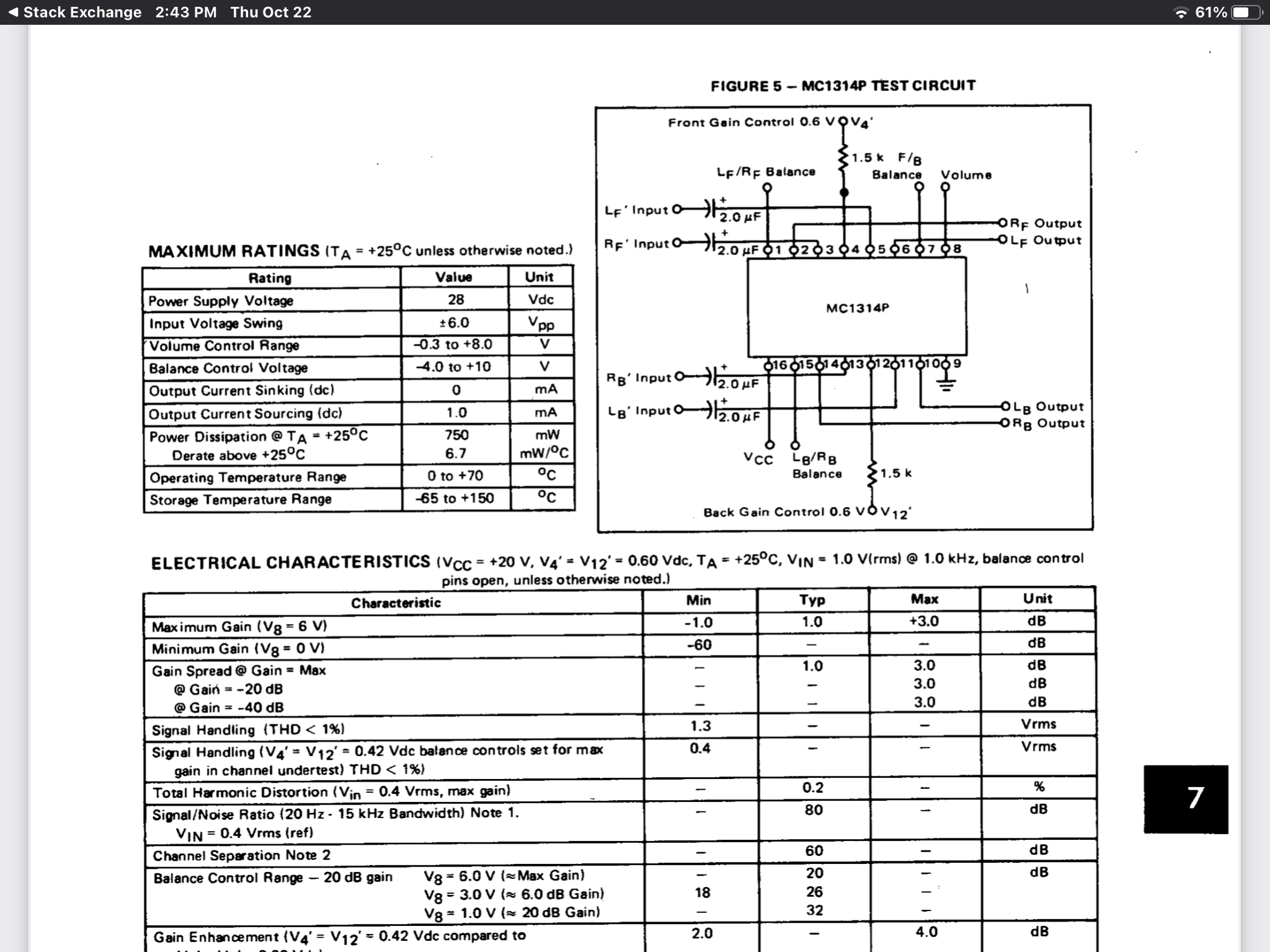I have an old quadraphonic system with a problem that I've traced to what I think is an MC1314. (That's not the question.) So I ordered a replacement, popped in and it didn't solve the problem. I decided to make a test circuit based on the data sheet (available here https://datasheetspdf.com/pdf-file/570328/Motorola/MC1314P/1 on page 4 with notes on page 11.) Here's the circuit I bread boarded:

The +18V was two 9V batteries in series. Anyway, I plugged it in and blew the IC. That leads me to suspect that 1) I screwed something up, or 2) The chip was bad, or 3) The chip actually wasn't an MC1314 or 4) The chip was an MC1314, but Motorola has recycled the number. I haven't found any evidence of #4, seeing as how I ordered it from eBat #2 or #3 are also possible, and since I'm human, #1 is always a leading possibility. Edit: What could have gone wrong?

